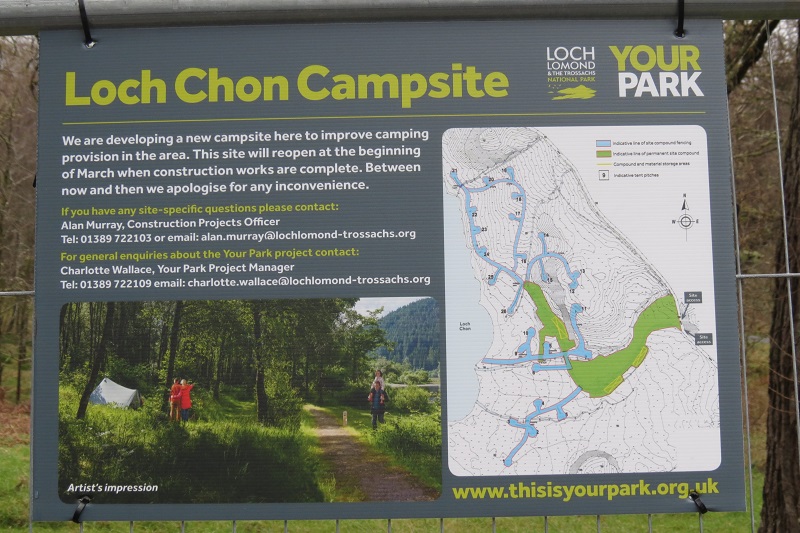 At the Lomond and Trossachs National Park Authority Board Meeting on 12th December Bob Ellis, the Board Member on the Local Access Forum, reported he had been to visit the Loch Chon campsite and suggested other Board Members might also visit. Having visited last Sunday to look at the work in progress I recommend they do so, to understand where “camping in the park” is going wrong.
At the Lomond and Trossachs National Park Authority Board Meeting on 12th December Bob Ellis, the Board Member on the Local Access Forum, reported he had been to visit the Loch Chon campsite and suggested other Board Members might also visit. Having visited last Sunday to look at the work in progress I recommend they do so, to understand where “camping in the park” is going wrong.
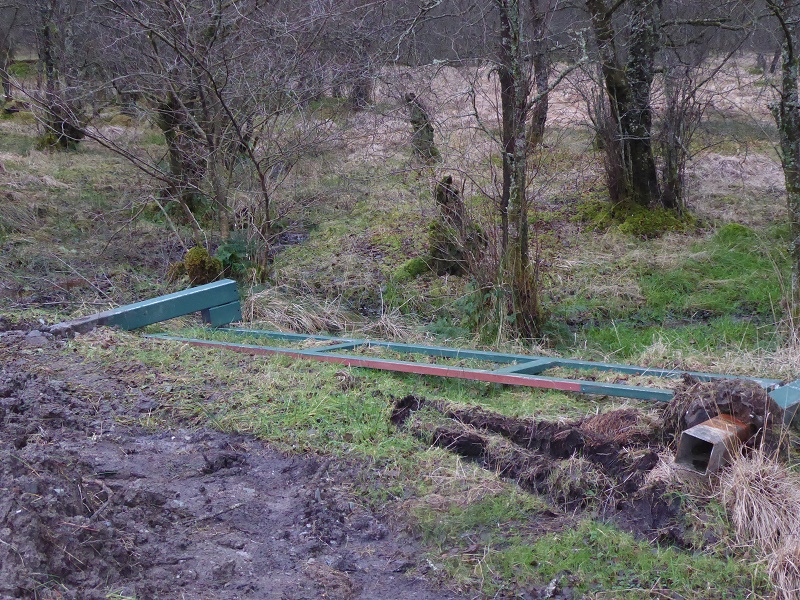
I am not sure why the Local Access Forum needed to visit – unless it was to take a look at the gate in the photo above, which Forestry Commission Scotland had installed and had stopped canoeists from accessing the loch. I guess the Park was trying to persuade access forum members that it was worth sacrificing access rights for this campsite.
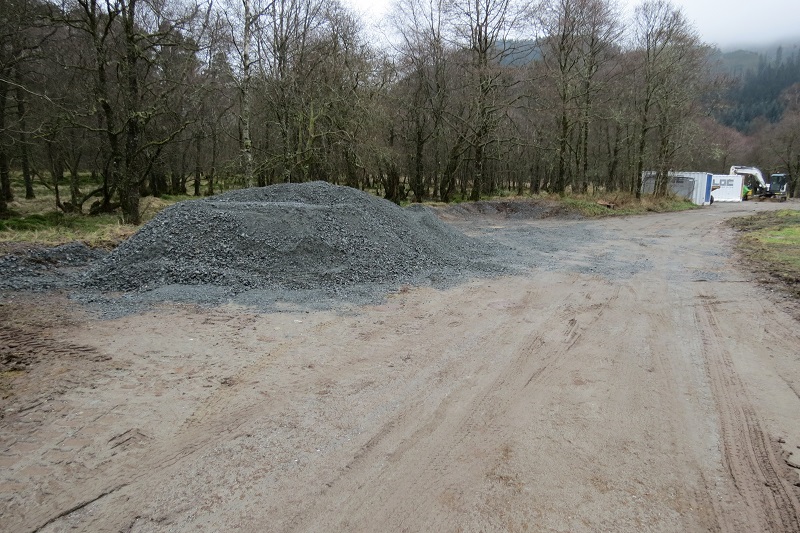
If I was a member of the LAF the first question I would have asked is why with all this space is there not provision for a single campervan place in the new campsite? Indeed why are campervans being banned completely from the Strathard Camping Management zone Strathard? There is no rational reason for this. As Strathard is relatively remote and has no public transport at least people with campervans might be able to get to Loch Chon, unlike the campers who have no car, and might even be able to afford the £7 per person per night camping fee, income which the Park desperately needs to pay for this unwanted campsite. I predict the Park will be forced to allow campervans to stay at Loch Chon sooner rather than later.
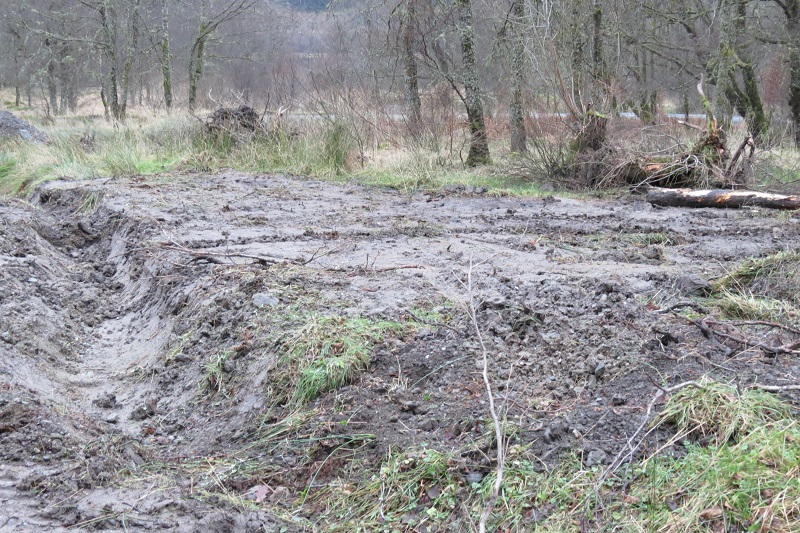
The second question I would have asked the Park is why, when the rationale for this campsite was to prevent campers causing damage, is so much destruction taking place?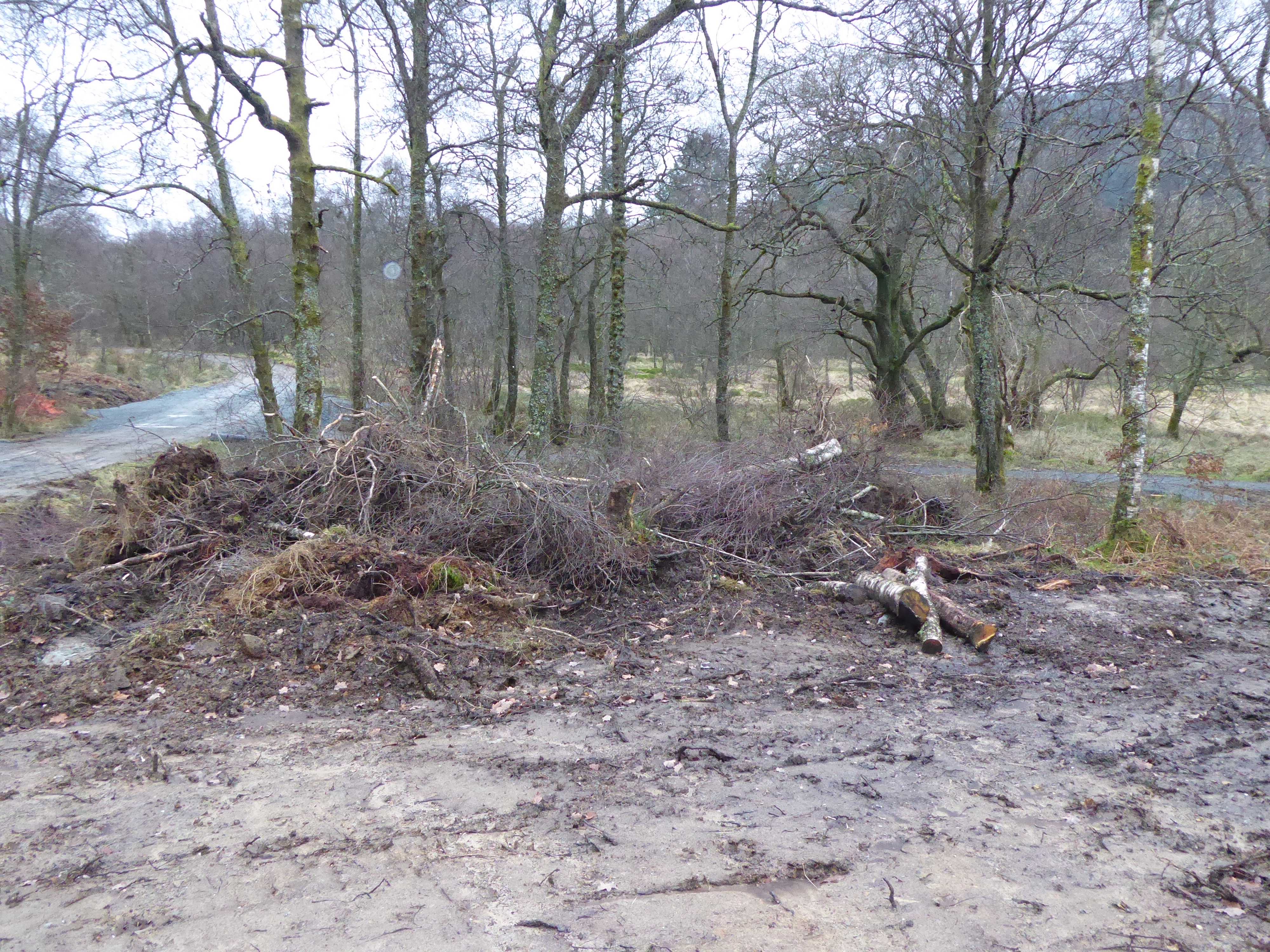
Trees have been chopped and cleared………because……….of all the damage uncontrolled camping is apparently doing to trees
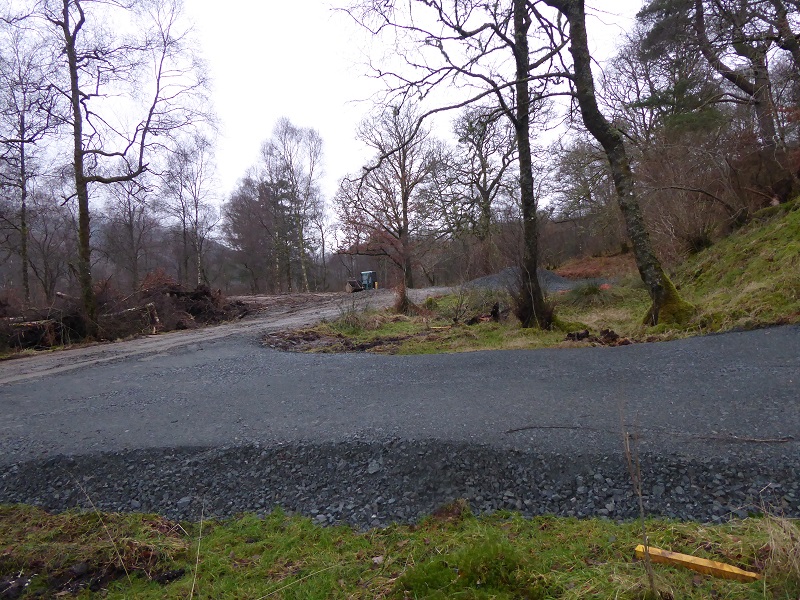
Compare the damage to ground vegetation that has been caused here by these works compared to all the damage that has ever been done by campers, responsible or not.
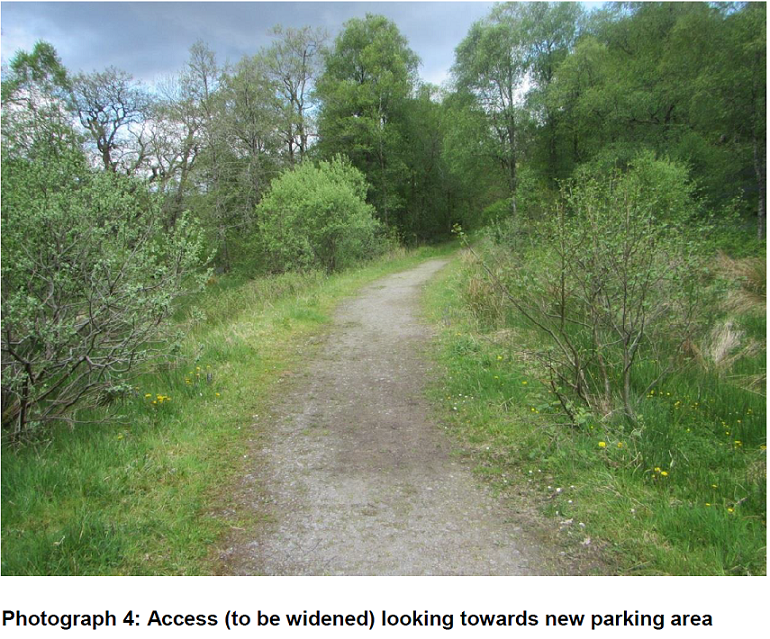
This photo gives an impression of how the area looked before the LLTNPA started work on the new car park. I am not against new campsites, indeed I have argued for them, but a campsite of this scale was never needed for this location. The destruction is therefore unjustifiable.
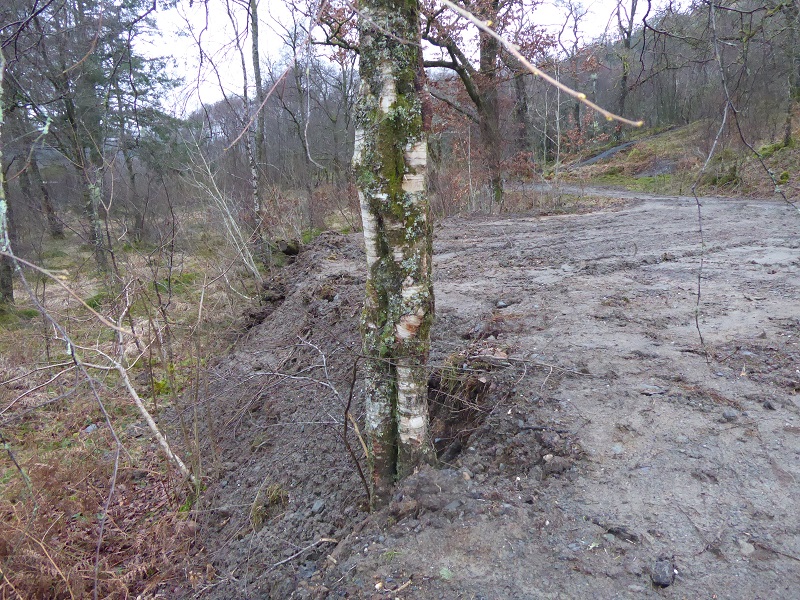
Its ironic that the National Park which claims it was against roadside camping has extended a road into the woods in order to let people to park their vehicles close to the fixed camping pitches. There is a reason for this of course, the pitches are singularly unattractive for camping and if you could not park your car relatively close to them no-one would even have visited the campsite.
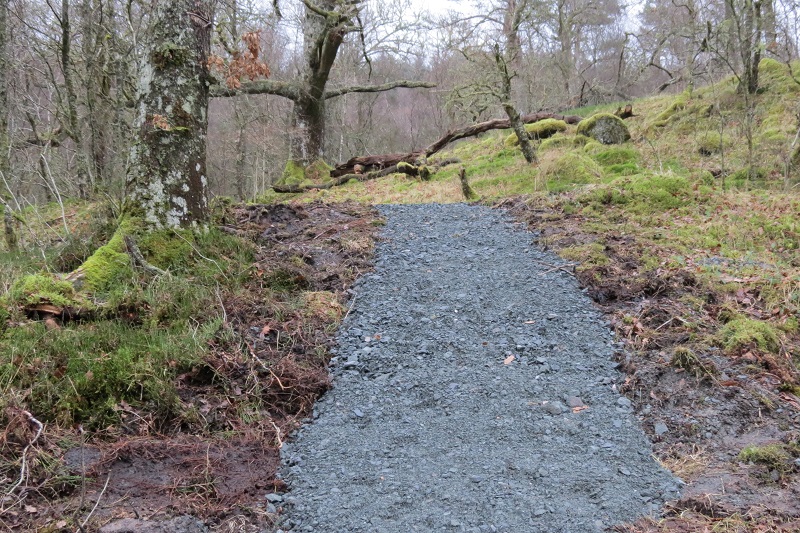
An extensive new pathwork, with side paths to each pitch has been created. Paths were needed because without them no-one would be able to find the “pitches” which in the the places where people have camped here up to now being up the hill and away from the loch. Still, on the Park’s logic, what was the justification for this type of path which would be more suited to an urban park than an area which the Park now claims is for “wild camping”?
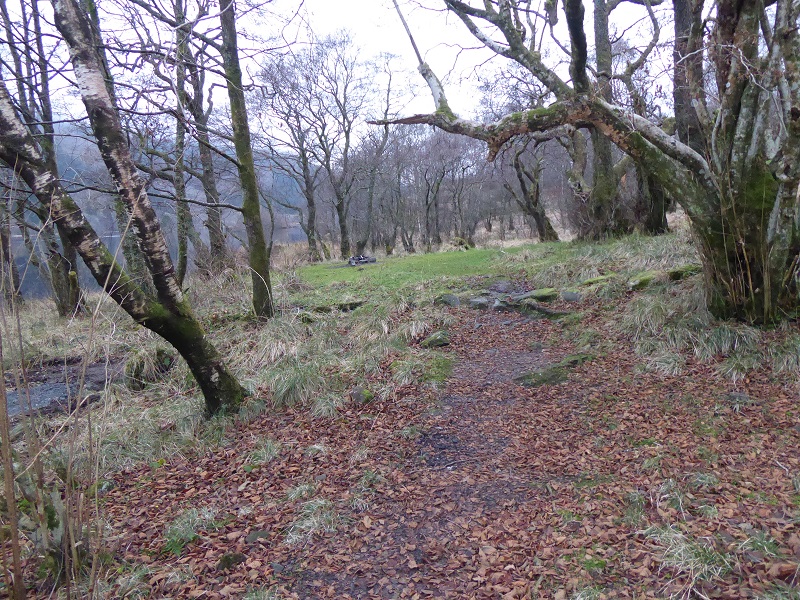
The Park didn’t even think of using the tracks that were already there and which blended into the environment. Instead it decided to create new paths which are totally out of keeping with the environment and unnecessary.
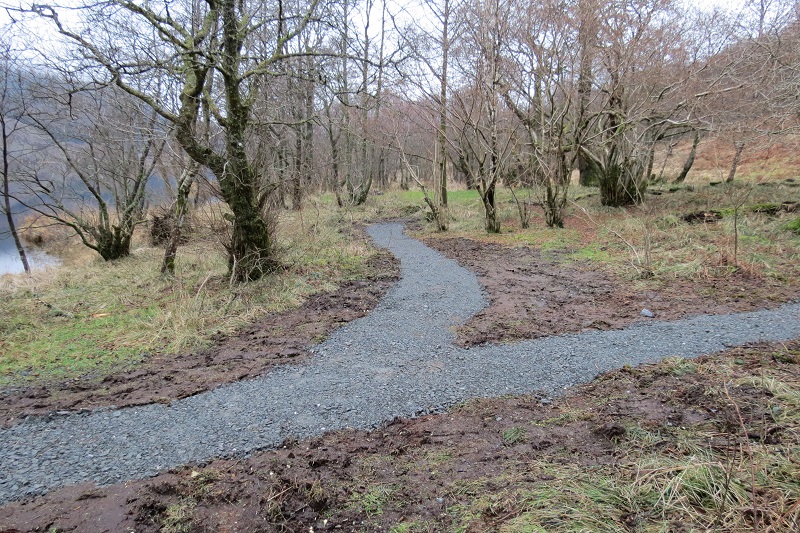

Most of the old narrow paths people used to use have been obliterated by the new construction. Is any of the new pathwork or carparks really “sympathetic to the rural setting”? In my view most of the work was completely unnecessary and very costly.
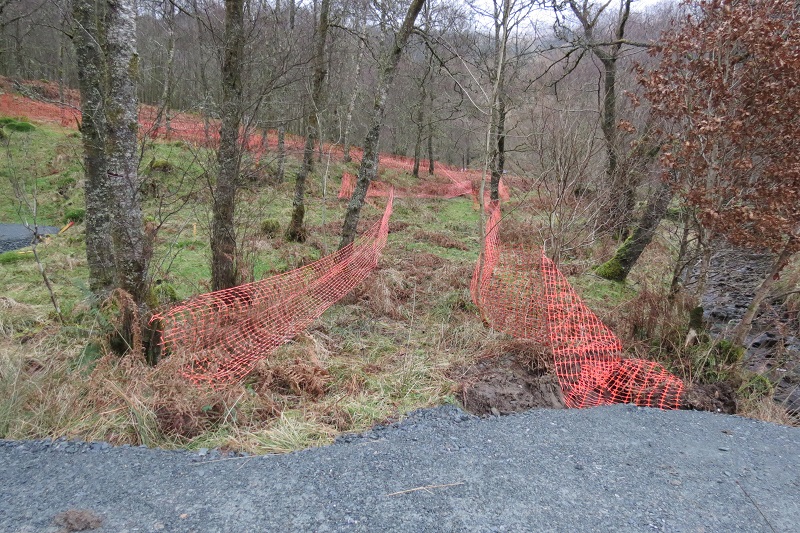
It appears the Park planners prefer aggregate to grass. That’s not the right choice in what is supposed to be a National Park.

Whoever has selected the camping pitches appears to knows nothing about camping. This site is sloping. The LLTNPA Committee Report stated that “To form the camping pitches, apart from some light scraping of the ground no ground works are required”. The Park is though proposing to cover the pitches in bark and on this one its likely to slide down the hillside.
There was no evidence – and I looked at every pitch – that anyone had ever camped there except in one case. Most of the pitches are singularly unattractive for camping.
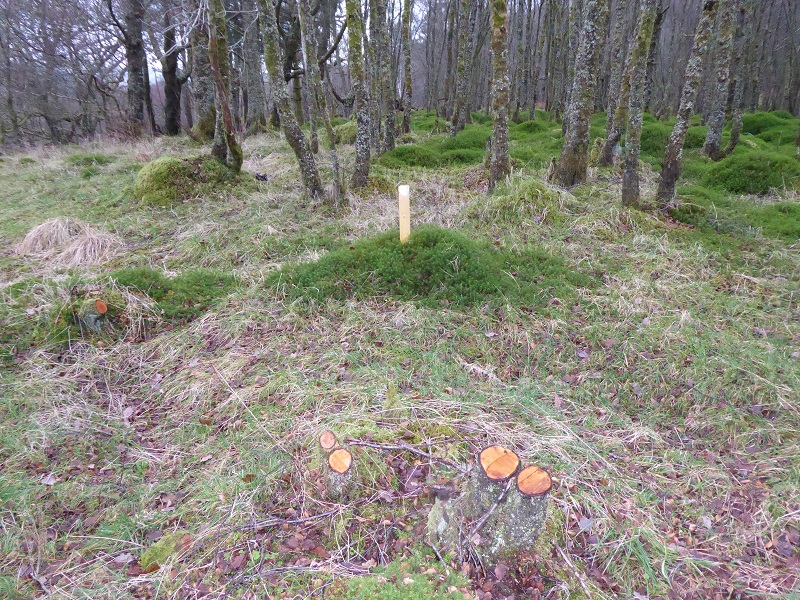
Would you choose to camp here even if the polytrichum moss is scraped away and replaced by bark as the Park is proposing?
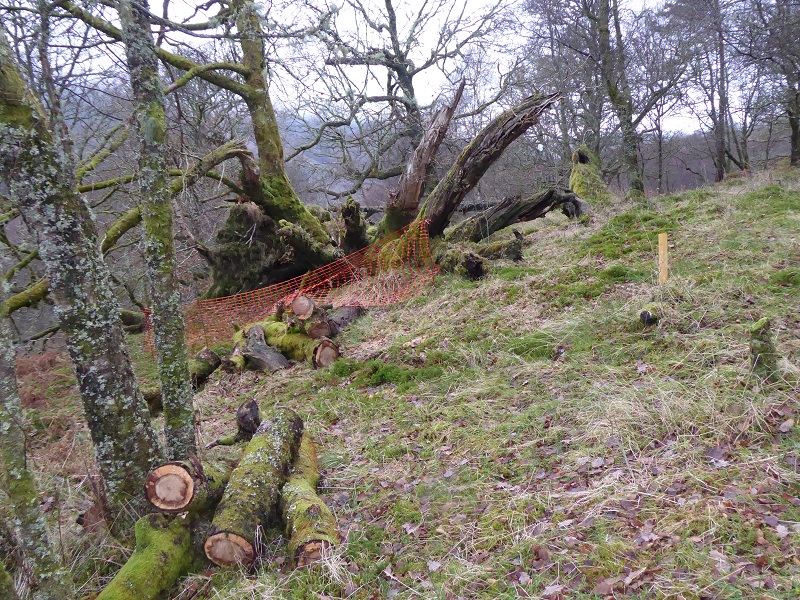
Another sloping pitch at top of sloping section of path still to be constructed. The evidence of the woodland clearing that has been necessary to create this unsuitable camping pitch is obvious.
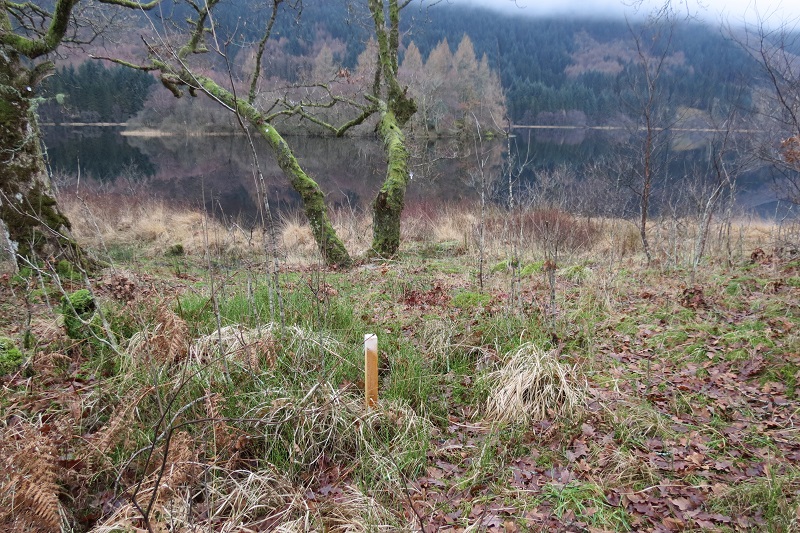
This is about as close to the park shore as campers will be allowed to camp
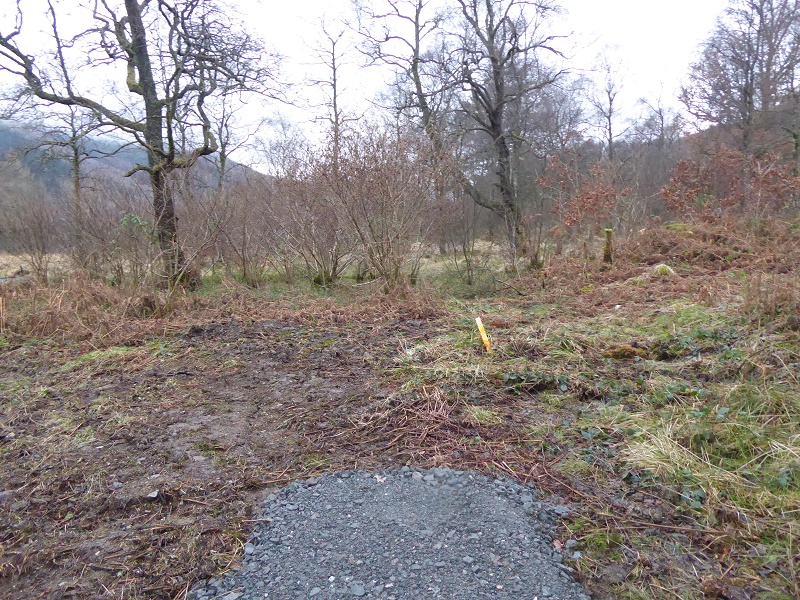
While several of the pitches on the hillside are sloping, many of those on the lower ground while flat are not well drained and would never normally be chosen by campers.
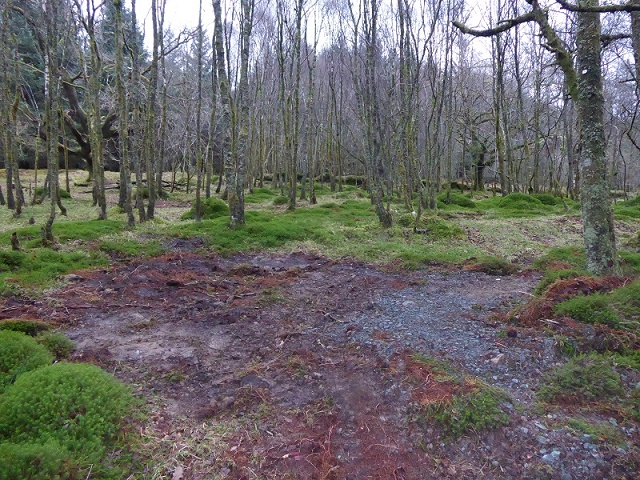
It appears that in order to make this “pitch” campable the Park has dumped aggregrate onto the ground by the tree to firm it up.
The basic problem is the thinking of the Park. They want to stop people camping by the loch shores at whatever cost so most of the pitches are up the hill or – if you look at sign in first photo – on the inland sign of the path where it goes close to the shore. The places where people currently camp – chosen because they are good places for camping – are by the lochshore and on well drained ground with grazed turf. Its also worth noting that many people go camping to be sociable, they want to camp in groups and talk round a fire. The Park wants to segregate people – Simon Jones Director of Conservation at the Board indicated pitches in permit areas would be 5m x 5m maximum, too small for several tents to camp – and if this is applied to Loch Chon, why would groups, including families, ever come?

In the BBC coverage of Loch Chon (see here) the Ranger was filmed talking about the damage done by fires. The two fire pits in the photo above (the only ones on this section of shore) are contrary to Scottish Outdoor Access Code which states you should leave no trace of the fire. However, putting it into perspective almost as much ground has been affected by mole heaps and this is nothing compared to the new path behind.
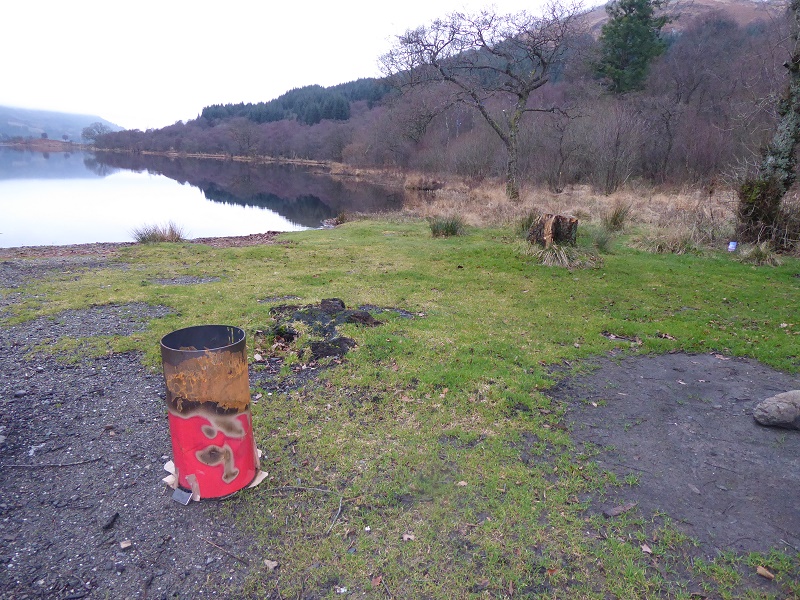
The Ranger in the BBC interview referred to the damage done by tents. The only bare patches that I spotted along the whole of Loch Chon were in this and the succeeding photo and the only patch that was almost certainly caused by a tent was that on the right of this photo. One patch of bare ground compared to the 26 new pitches the Park is creating covered by bark.
Looking along the shore line you can see that there were not many areas good for camping – in fact there are just half a dozen spots like this along the whole shoreline. The lack of many suitable camping areas plus the remoteness explains why not that many people used to camp here. It was mainly fishermen that came – will they continue to visit if they cannot camp near to where they want to fish?
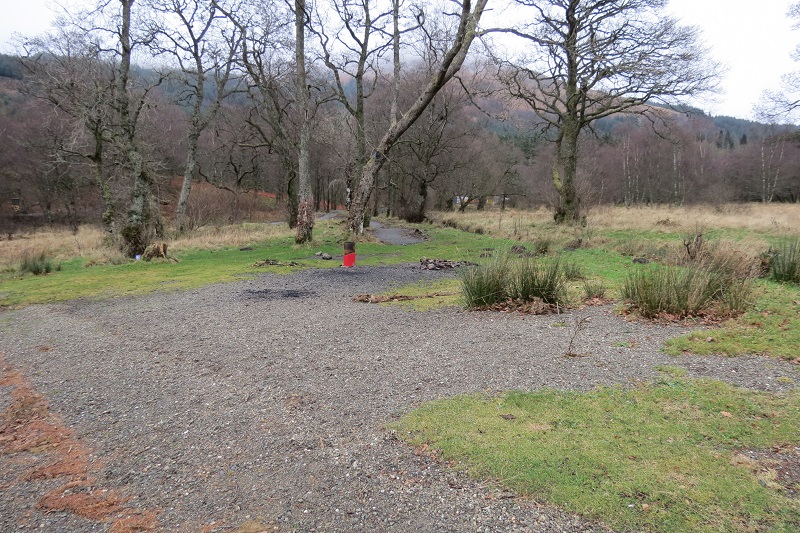
The Park has extended the new path to down near the area in the photo but no camping will be allowed here. The bare patch in the earlier photo is behind the red firepit. While the ground is eroded here its likely this has been as much through feet as tents. Does this small area of eroded ground really justify the opinion of the Park’s landscape adviser below?

Finally, for the sake of completeness, its worth saying that we saw no evidence of human crap or toilet paper in the entire area covered by the campsite or along the shore of Loch Chon.
What’s gone wrong?
In my view the Loch Chon campsite is a disaster:
- Gordon Watson made the misleading claim on BBC out of doors that the Loch Chon campsite enabled lochside camping – the reality is the Park has designed this campsite so people cannot camp on the shore or even close to it (with the exception of one pitch). Why would people come here if they cannot camp by the shore?
- The construction of the campsite has caused far more damage than campers have ever caused here and is completely overspecified – this should never have happened in a National Park
- Most of the pitches are badly located and unsuitable for camping and would never be naturally chosen by campers.
I think the reason this has happened is because:
- The Park has completely failed to consult with campers about the campsite design. If it had done so this development would never have gone ahead.
- The Park Planning Committee failed to make a site visit – the one great strength of the CNPA planning committee is it quite often makes site visits. I think if Committee members had visited the site they might have rejected the whole proposal.
- Park staff and Board Members are so obsessed with the impacts of campers – at the Board Meeting Petra Biberbach asked Park staff how they were going to monitor impacts of tents on vegetation so they can adjust the number of permits they issue – that they literally cannot see the wood for the trees. If they visited Loch Chon they would see that the current impacts of camping are minor, tiny compared to what the Park is doing, and could have been fixed for a tenth of the price.
I supported the proposal in the Your Park consultation to create more campsites but until there is a fundamental change in thinking – which I think will require regime change – I don’t think the Scottish Government should allow the LLTNPA Park to develop any more campsites itself. Community organisations working with recreational organisations could create much better infrastructure to support camping for far less money than the £345k that the LLTNPA is spending at Loch Chon.
I suspect that a significant element behind the way the NPA has dealt, and is still dealing, with the issue of camping (the perceived camping ‘problem’) is that few, if any, of the Board members and staff have camped, or do camp. They, therefore, have no understanding of why people choose to camp, nor what experiences people gain from doing so.
I’ve canoed Loch Chon a few times. I use my camper van to transport the canoes, if there’s no access for camper vans how do I get there? Although having seen what’s going on, I don’t think I want to go back..